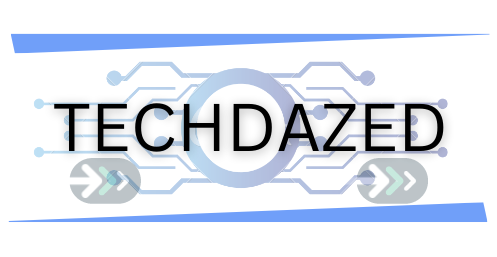Design thinking is all about creating solutions that fit the needs of real people. Imagine it as a toolbox where designers pull out different tools, like empathy and creativity, to solve problems. Today, a lot of those tools are being upgraded and replaced with innovative new tech tools. Just like the way smartphones changed how we talk to each other, technology is reshaping the world of design thinking.
Let’s dive into how technology is making waves in the design world.
3D Printing Enables Rapid Prototyping
Remember when making a model of something took days if not weeks? Well, those days are quickly fading, thanks to 3D printing. Imagine if you could take an idea from your head, quickly draw it out on a computer, and then, in a matter of hours, have a physical object you can hold in your hands. That’s what 3D printing does.
Let’s think about shoe designs. In the past, if someone had a new idea for a shoe, it would take a long time to create the first model. Now, with 3D printing, they can design the shoe on a computer and then “print” a wearable version in no time. If they find it’s not comfortable or needs a little tweak, they can easily make changes and print a new version. It’s all about trying, learning, and improving, but way faster than before.
Design thinking is an ever-evolving field, especially when you throw technological tools into the mix. Marketers, product developers, and other innovative professionals can make the most of combining tech with design thinking. For those looking to improve their design thinking skills, earning a design thinking certification will prove worthwhile. Such advanced certificates enable you to creatively and efficiently cater to the ever-changing needs of customers.
Digital Collaboration Tools Enhance Ideation
First off, what’s ideation? It’s the process where designers brainstorm and come up with various ideas. Now, picture a group of people standing around a big whiteboard with markers, doodling, scribbling, and chatting away. That’s a traditional ideation session. But what happens when these people are scattered all over the world? That’s where digital collaboration tools come into the mix.
Instead of a physical whiteboard, we now have virtual boards where teams, no matter where they are, can gather and share ideas. It’s like everyone’s using magic markers on the same board from different corners of the world. And the best part? Changes can be made instantly. If someone in Tokyo has an idea at midnight, their colleague in New York can see it when they wake up. This real-time connection means designs can evolve faster and become better with the combined brainpower of global teams.
But there’s more to it than just convenience. These tools also allow for instant feedback. If someone sketches a design or writes down a thought, others can immediately give their views. It’s like having a 24/7 brainstorming session where ideas keep flowing, growing, and improving.
AI and Machine Learning Refine Prototyping
Next, let’s talk about prototypes. A prototype is like a rough draft. Before you write the final essay, you make a draft, right? Similarly, before a product is made, designers create a prototype to see how it might look and work.
Now, technology, especially Artificial Intelligence (AI) and Machine Learning, is making prototyping smarter. Imagine having a helper who can tell you, “Hey, this design might have a small issue here,” or “People might not like this part.” That’s what AI does. It can predict problems even before they happen. And this means designers can fix issues early on, saving time and effort.
With automated user testing, designers don’t have to guess if users will like a design. AI can simulate how real people might interact with the prototype. It’s like having a sneak peek into the future. And the more this tech sees and learns, the better it gets at giving advice.
Virtual Reality (VR) and Augmented Reality (AR) Create Immersive Experiences
Have you ever worn those funky VR glasses? It feels like you’re in a different world, right? That’s what designers are now using to test out their ideas. Instead of just imagining how a new park, building, or product might feel, they can step into a virtual version of it.
Virtual Reality (VR) lets designers and users walk through designs in a lifelike way. It’s like taking a test drive in a car before buying it. On the other hand, Augmented Reality (AR) overlays digital stuff in the real world. So, if a designer is creating a new app, they can use AR to see how it might look on your phone or tablet.
Big Data Provides Richer Insights
You’ve probably heard the term Big Data thrown around. It sounds complicated, but let’s simplify it. Imagine you own a toy shop, and every day, you take notes about which toys kids look at, which ones they play with, and which ones they buy. Over time, you’ll notice patterns, like “Oh, kids really love the teddy bears with the blue ribbons!” That’s a basic example of what Big Data does but on a much, much larger scale.
In design thinking, this means having a clearer picture of what people like and don’t like. Instead of just guessing, designers have real facts and figures to guide their choices. It’s like having a super-powered magnifying glass that shows what works and what doesn’t. With all this information, designs can be shaped to fit perfectly with what people really want and need.
Open-source Platforms Foster Collective Innovation
Have you ever had a school project where everyone in the class added a bit of their unique ideas? Open-source is kind of like that. It’s a space where people from around the world can share their designs, ideas, and solutions. Everyone can take a look, make suggestions, or even make unique versions.
Open-source platforms allow designs to grow and develop with the insights of several individuals. It’s a proven way of working together to create something bigger and better than what one person could do alone.
Sustainability through Technology-Driven Designs
Caring for our planet is a big deal. And guess what? Technology is helping designers do just that. With the help of computers and software, they can test out ideas before making them real. For example, if someone’s designing a new bottle, they can use tech to figure out how to use the least amount of plastic or even find a completely eco-friendly material.
Technology also helps in finding sustainable resources. Instead of cutting down trees, designers can find out where to get recycled wood or other green materials.
Also Read: Top 10 Benefits Of Robotic Process Automation
Conclusion
Technology isn’t only about the latest gadgets or the fanciest software. It’s an assistive tool that guides designers to create products and solutions that fit better in our lives. From sharing ideas across the globe to making quick prototypes to ensuring what we make is good for our planet, technology is reshaping design thinking in the best way possible. And as the world of tech keeps evolving, who knows what amazing possibilities lie ahead? One thing’s for sure: the future of design is looking bright and exciting.

